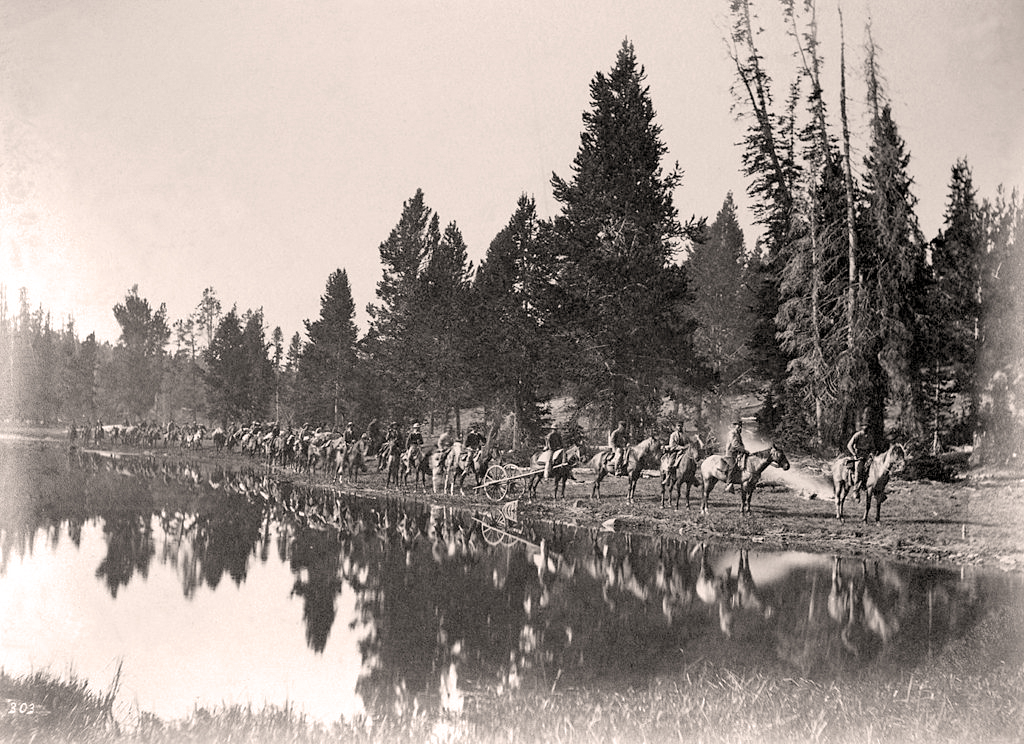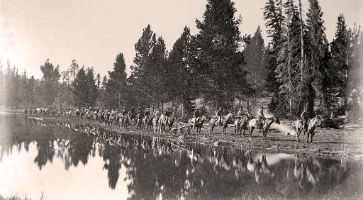
CHEYENNE, Wyo. (AP) – Boulders shift, canyons erode, old trees fall, new ones grow and tourists crowd Yellowstone National Park, the length of their vacations barely any time at all in the stream of history.
A century and a half is nothing in the eons of often violent geology that made Yellowstone. Even so, an exhausting project by a Jackson photographer shows how an ecosystem protected for that long can change in ways obvious and subtle.
Brad Boner visited dozens of sites in the park photographed by William Henry Jackson in 1871, the year before Congress made Yellowstone the world’s first national park. Boner painstakingly replicated in color more than 100 of Jackson’s black-and-white photographs.
This summer, 40 of Boner’s images go on display next to Jackson’s originals at the National Museum of Wildlife Art in Jackson Hole. During the centennial year for the National Park Service, the exhibit testifies to the success of the world’s first national park, Boner said.
“The whole point of creating Yellowstone was to give future generations an opportunity experience these special places,” he said. “When I look at these pictures, I take a great deal of comfort in knowing that my kids are going to be able to go to a lot of these places and see the same thing.”
The images show what can change, too: Rock pinnacles at Tower Fall crumble and alter the flow of Tower Creek; the shoreline of Yellowstone Lake erodes dozens of feet in places; the edge of the Grand Canyon of the Yellowstone, where Jackson once stood, collapses into the chasm.
Boner took several trips to Yellowstone over the summers of 2011-2014. He spent much time wandering with Jackson’s photographs held up to the horizon.
“Things would just sort of click and fall into place. All of a sudden, you’re looking at the landscape that is in the photograph that I was holding, that Jackson took,” Boner said. “There were definitely times I got goosebumps.”
Jackson traveled Yellowstone as part of a federally funded expedition to explore and document the area. He carried his photography gear on mules. Taking a photo back then involved exposing images on an 8-by-10-inch glass plate and developing the negative on the spot.
“Basically he had to set up his little darkroom every time he wanted to take a picture,” Boner said.
Boner had modern digital camera gear but a couple of his trips were plenty ambitious. With a friend, he paddled around the edge of Yellowstone Lake, about 60 miles, in a canoe. Another trip took him, his wife and a friend more than 30 miles over the rugged and remote Mirror Plateau.
“We saw bears where we didn’t think we would see bears. We got snowed on in July,” Boner said.
Other times his targets, especially grand vistas and thermal features, were heavily traveled.
“I’d be standing shoulder to shoulder with a whole bunch of tourists because Jackson had this knack for a picking out the best spot,” said Boner.
Boner, a staff photographer for the Jackson Hole News & Guide, plans to publish the images in a book later this year.
___
By MEAD GRUVER, Associated Press
Follow Mead Gruver at https://twitter.com/meadgruver
Copyright 2016 Associated Press. All rights reserved. This material may not be published, broadcast, rewritten, or redistributed.
AP-WF-05-23-16 0544GMT


